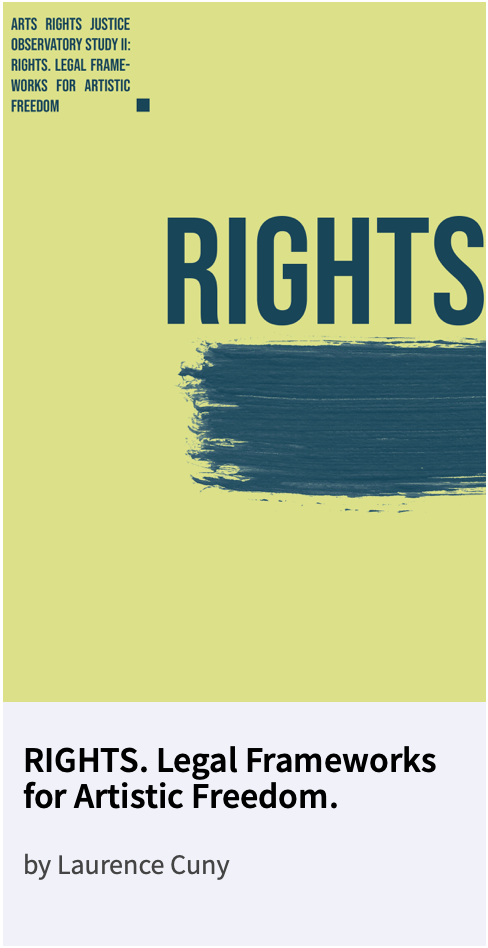Introduction
The year 2018 marked the 70th anniversary of the Universal Declaration on Human Rights (UDHR). This anniversary provided an opportunity to examine the challenges ahead at a time where universality is being questioned and needs to be strongly reaffirmed. ‘The law is a source of important norms guaranteeing universal human rights, but also a terrain of struggle over these rights. International and national law and courts can and should be used to advance universal human rights norms over claims of relativism and particularism’ (UN Special Rapporteur, 2018, para. 27). This study will examine artistic expression and the enjoyment of the arts from a rights perspective. In doing so, we will first examine international law and its related mechanisms, and how they promote and protect artistic expression. We will also look at regional courts and their mechanisms, and the role of civil society in promoting the legal protection of artistic freedom. Finally, we will examine national legislation and its application in six chosen countries. By doing this, we hope to identify which elements en- able or limit artistic expression.
When considering freedom of artistic expres- sion, the most important foundation is Article 27 of the UDHR, which reads as follows:
(1) Everyone has the right freely to participate in the cultural life of the community, to enjoy the arts and to share scientific advancement and its benefits.
(2) Everyone has the right to the protection of the moral and material interests resulting from any scientific, literary or artistic production of which he is the author. (UDHR, 1948)
Artistic expression therefore first appeared in the realm of cultural rights as encompassing the right to enjoy the arts. Artistic expression is also covered by the right to freedom of expression and its legal limitations, which raises immediate questions about the level of protection that artistic expression should enjoy. But is artistic ‘discourse’ different from other forms of expression?
What weight should be given to the right of the audience to access and enjoy the arts when we need to balance conflicting rights? What is the effect of censorship of and self-censorship by artists who fear retaliation on the public’s access to and enjoyment of the arts? A previous study, which forms part of the research by the Arts Rights Justice programme, discussed the origin and definition of artistic freedom. This paper focuses on rights, and analyses the different legal mechanisms that protect freedom of artistic expression and the implementation of these mechanisms. This study adopts an approach that combines both civil and political rights (the freedom of expression approach) and cultural rights (the right to enjoy the arts). This combination of approaches is needed for a more effective and strategic defence and promotion of artistic freedom.
Twenty-two countries explicitly protect freedom of artistic and creative expression (UNESCO, 2017, p. 220). However, this information alone is not sufficient to establish whether artistic freedom is respected or not. It is only one of the elements we can look at when examining artistic freedom at country level. Rights are permanently negotiated. For example, blasphemy laws exist in certain countries and not in others. The law of a state thus reflects the actual equilibrium between values, ideas, lobby groups, etc. An offended minority can be very proactive in taking cases to national courts, claiming its rights are being infringed (public morals, child protection, defamation or blasphemy for instance) and can obtain adverse decisions that will become part of the case law. Artistic freedom is not an absolute right, and must be balanced against other rights; judges ultimately decide which rights prevail, on a case-by-case basis. Our point of view is that, in almost all cases, in striking the balance, the courts should favour the defence of artistic expression because it contributes to much-needed debates in the particular context of shrinking democratic spaces.
This study therefore also addresses the importance of looking at national case law and the role of judges, lawyers and prosecutors. However, above all this, states have made commitments at both the regional and international levels and are bound by human rights obligations. The national decisions reflect this situation by referring to the regional courts (for example, the Inter-American Court of Human Rights or the European Court of Human Rights) and in fine to the United Nations system.
Download full report from ARTS RIGHTS JUSTICE Observatory.
Further analysis on the subject can be found at the ARTS RIGHTS JUSTICE Library.

